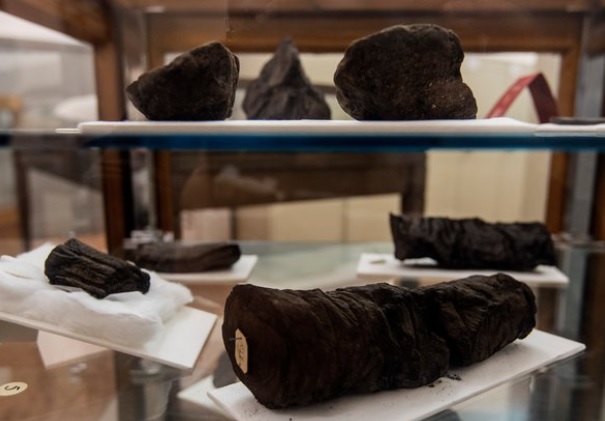
Most of us have read the accounts in history books of the total destruction of the city of Pompeii when Mt. Vesuvius erupted in 79 A.D. But many may have never heard of the other Italian city that was also severely impacted by the eruption. Herculaneum is another town that was destroyed by the volcanic eruption, but unlike Pompeii’s obliteration which was caused by lava, the major impacts in Herculaneum were the result of a catastrophic mix of superhot gases and ash that engulfed the town.
Today, nearly 2,000 years later, scientists think they may have found a way to safely recover some of the information previously thought lost forever to the volcanic eruption. In a villa in Herculaneum thought to have belonged to the father-in-law of Julius Caesar, more than 300 scrolls were found that may contain what were long-thought vanished works of ancient Greek and Roman authors. Following the eruption, these scrolls were not burned, but rather carbonized by the hot gases. They were originally excavated from the villa in 1752.
Throughout the centuries, researchers have unsuccessfully attempted to unroll and decipher what’s contained within those scrolls. But as one might expect, the scrolls are incredibly fragile, and the researchers soon realized that any attempts to unfold the contents would just damage them further. They eventually gave up hope.
However, using a variation of X-ray technology, researchers from the Institute for Microelectronics and Microsystems in Naples, Italy, recently discovered that they might be able to view what’s written inside those scrolls without ever having to unroll them. A delicate method termed X-ray phase contrast tomography (XPCT) is allowing these researchers to differentiate between the ink and the papyrus on the scrolls.
According to a description on iflscience.com, XPCT “exploits the differences in the phase—a measure of how fast light or other types of radiation spreads through the substances.” In this case, the XPCT enhanced the contrast between the papyrus and the ink, making it possible to distinguish content hidden inside the scrolls.
In fact, the researchers have indicated that through the use of X-ray phase contrast tomography, they have been able to read individual Greek letters on the scrolls. Interestingly, the researchers have been able to look at the handwriting used in the scrolls and compare it to other works written around the same time near the same area. As a result, they believe that at least one of the scrolls they have reviewed was written by Philodemus, a poet and philosopher who actually died a century before Vesuvius erupted.
“At least we know there are techniques able to read inside the papyri, finally,” head researcher Vito Mocella from the Institute of Microelectronics and Microsystems said in a recent interview.
Via The Verge and the New York Times
Advertisement
Learn more about Electronic Products Magazine





